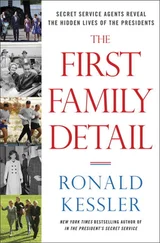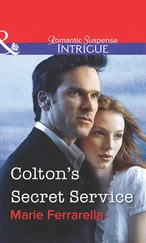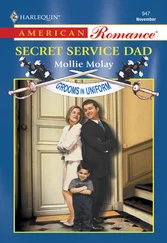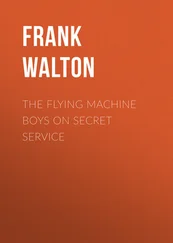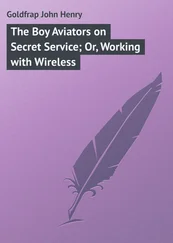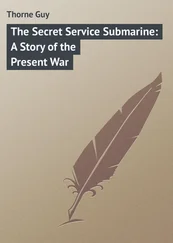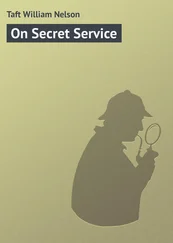The panic alarms bring Secret Service agents running, guns drawn. Besides agents and uniformed officers stationed around the Oval Office, the agents deployed to W-16 under the Oval Office can leap up the stairway in a few seconds.
As a last resort, the White House has emergency escape routes, including a tunnel that is ten feet wide and seven feet high. It extends from a subbasement of the White House under the East Wing to the basement of the Treasury Department adjacent to the White House grounds.
One of the more dramatic attacks took place on October 29, 1994, at two fifty-five P.M., when Francisco Martin Duran stood on the south sidewalk of Pennsylvania Avenue and began firing at the White House with a Chinese SKS semiautomatic rifle. As he ran toward Fifteenth Street, he paused to reload, and a tourist tackled him. Uniformed officers drew their weapons but held fire as more tourists grappled with Duran.
“I wish you had shot me,” Duran said as the officers arrested him.
Since a white-haired man was coming out of the White House when Duran began firing, Secret Service agents concluded that Duran likely thought he was firing at President Clinton. He was convicted of attempting to assassinate the president and sentenced to forty years in prison. He was also ordered to pay the government thirty-two hundred dollars to repair damage to the White House, including replacing pressroom windows riddled with bullets.
In December 1994, four more such attacks—perhaps inspired by previous ones—occurred within a few days of one another. On December 20, Marcelino Corniel dashed across Pennsylvania Avenue toward the White House brandishing a knife. Uniformed Division officers and Park Police ordered him to drop it. When he refused and lunged toward a Park Police officer, another Park Police officer shot and killed him.
What was not included in news reports was that the man had a “seven-inch knife taped to his arm, so when the officer told him to drop the knife, he couldn’t,” says former Secret Service agent Pete Dowling. “This was what they call ‘suicide by cop.’ The guy wanted to be killed. And unfortunately the police officer felt that his life was being threatened, and he shot and killed the man.”
A day after that incident, Uniformed Division officers opened the southwest gate to admit an authorized vehicle. Just then, a man burst past them and ran toward the mansion. The officers tackled and arrested him. The man was a disturbed individual who had an obsession with the White House.
Two days later, a man fired at the mansion with a nine-millimeter pistol from the perimeter of the south lawn. While two shots fell short of the White House, one landed on the State Floor balcony, and another penetrated a window of the State Floor dining room. After a Uniformed Division officer scanning the south Executive Avenue sidewalk noticed a fidgety man, a Park Police officer ran after him, searched him, and confiscated the pistol.
A previous incident on September 11, 1994, demonstrated the White House’s vulnerability. That evening, after drinking and smoking crack cocaine, Frank E. Corder found the keys to a Cessna P150 airplane that had been rented and returned to the Aldino Airport in Churchville, Maryland. Although the thirty-eight-year-old truck driver was not a licensed pilot, he had taken some lessons and had flown that particular aircraft several times.
Corder stole the plane and flew to the White House. He then dove directly toward it at a steep angle. While aircraft are not supposed to fly over the White House, airplanes periodically do so by mistake. As a result, the military must exercise judgment when deciding whether to shoot down aircraft that stray into White House airspace. Given that after 9/11, cockpits of commercial airliners were hardened, air marshals were added to most flights, and many pilots are now armed, it is unlikely that such a plane would again be commandeered. But after 9/11, any general aviation aircraft that violated restrictions on flights near the White House and did not respond to military commands would be shot down by missiles or fighter aircraft. Each year, about four hundred general aviation aircraft are intercepted across the country and forced to land on threat of being shot down.
The Joint Operations Center at Secret Service headquarters now interfaces twenty-four hours a day with the Federal Aviation Administration and the control tower at Ronald Reagan Washington National Airport. Headquarters also views on radar any planes flying in the area.
Corder’s plane crashed onto the White House lawn just south of the Executive Mansion at one forty-nine A.M. and skidded across the ground. What Corder did not plan for was the Sony JumboTron that had been set up on the south lawn in front of the White House for an event. It was a giant television screen measuring thirty-three feet by one hundred ten feet.
“There’s no way he could have flown the plane into the White House,” says Pete Dowling, who was on the president’s protective detail at the time. “He couldn’t have navigated the plane without hitting the JumboTron. So he had to land a little bit early, and what he did was, he just came to rest against one of the magnolias that was right in front of the south part of the White House.”
Corder died of multiple, massive blunt-force injuries from the crash. At the time, the White House was undergoing renovations, and President Clinton and his family were staying at Blair House.
While Corder had expressed dissatisfaction with Clinton’s policies, and his third marriage had just gone on the rocks, the Secret Service concluded that—like most assassins—his purpose had been to gain notoriety. He had told friends he wanted to “kill himself in a big way” by flying into the White House or the Capitol.
Corder’s brother John said the pilot had expressed interest in Mathias Rust, a German teenager who flew a Cessna plane through five hundred fifty miles of heavily guarded Soviet airspace and landed in Red Square in 1987. John Corder quoted his brother as saying of the German: “The guy made a name for himself.”
The greatest embarrassment to the Uniformed Division took place on February 17, 1974, when U.S. Army Private First Class Robert K. Preston stole an army helicopter from Fort Meade, Maryland, and landed on the south lawn at nine-thirty P.M.
Instead of firing at the helicopter, uniformed officers called a Secret Service official at home, asking him what they should do. He told them to shoot at the helicopter. By then, the helicopter had flown away. It returned fifty minutes later. This time, Uniformed Division officers and Secret Service agents fired at it with shotguns and submachine guns.
“They riddled it with bullets,” a Secret Service agent says. “When he landed [the second time], he opened the door and rolled under the helicopter. It probably saved his life. They put seventy rounds through that. There were twenty rounds in the seat. He would have been shot to death [if he had not rolled under the chopper]. It was not going to take off this time.”
Preston, twenty, had flunked out of flight school and perhaps wanted to show them all that he did have some flying skills. He was treated for a superficial gunshot wound. He was sentenced to a year at hard labor and fined twenty-four hundred dollars.
Neither President Nixon nor his wife, Pat, was at the White House at the time.
9

Jackal
IN THEIR IN-HOUSE jargon, agents refer to any possible assassin as “the jackal.” Were a jackal to strike, it would most likely be when the president has left the cocoon of the White House. Every assassin has pounced when a president is most vulnerable—outside the White House, usually when arriving or departing from an event. That window of vulnerability opens several times a week when the president leaves the White House for an event in Washington or goes on a domestic or overseas trip.
Читать дальше


